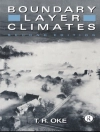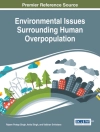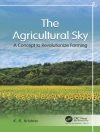Climate Forcing of Geological Hazards provides a valuable new insight into how climate change is able to influence, modulate and trigger geological and geomorphological phenomena, such as earthquakes, tsunamis, volcanic eruptions and landslides; ultimately increasing the risk of natural hazards in a warmer world. Taken together, the chapters build a panorama of a field of research that is only now becoming recognized as important in the context of the likely impacts and implications of anthropogenic climate change. The observations, analyses and interpretations presented in the volume reinforce the idea that a changing climate does not simply involve the atmosphere and hydrosphere, but also elicits potentially hazardous responses from the solid Earth, or geosphere.
Climate Forcing of Geological Hazards is targeted particularly at academics, graduate students and professionals with an interest in environmental change and natural hazards. As such, we are hopeful that it will encourage further investigation of those mechanisms by which contemporary climate change may drive potentially hazardous geological and geomorphological activity, and of the future ramifications for society and economy.
Jadual kandungan
List of Contributors
Foreword
Bill Mc Guire and Mark Maslin
Chapter 1: Hazardous responses of the solid Earth to a changing
climate
Bill Mc Guire
Chapter 2: Future climate changes in the context of geological
and geomorphological hazards
Felicity Liggins, Richard Betts and Bill Mc Guire
Chapter 3: Climate change and collapsing volcanoes: evidence
from Mount Etna, Sicily
Kim Deeming, Bill Mc Guire and Paul Harrop
Chapter 4: Melting ice and volcanic hazards in the twenty-first
century
Hugh Tuffen
Chapter 5: Multiple effects of ice load changes and associated
stress change on magmatic systems
Freysteinn Sigmundsson and others
Chapter 6: Response of faults to climate-driven changes in ice
and water volumes at the surface of the Earth
Andrea Hampel, Ralf Hetzel and Georgios Maniatis
Chapter 7: Does the El-Niño – Southern Oscillation
and influence earthquake activity in the eastern tropical
Pacific?
Serge Guillas, Simon Day and Bill Mc Guire
Chapter 8: Submarine landslides and tsunamis in a changing
climate
Dave Tappin
Chapter 9: Heat waves and slope stability in high mountain
terrain
Christian Huggel and others
Chapter 10: Impacts of recent and future climate change on
natural hazards in the European Alps
Jasper Knight, Margreth Keiler and Stephan Harrison
Chapter 11: Assessing the past and future stability of global
gas hydrate reservoirs
Mark Maslin, Matthew Owen, Richard Betts, Simon Day, Tom Dunkley
Jones and Andrew Ridgwell
Chapter 12: Methane hydrate instability: a view from the
Palaeogene
Tom Dunkley Jones, Andrew Ridgwell, D. J. Lunt, Mark Maslin, D. N.
Schmidt and Paul Valdez
Index
Mengenai Pengarang
Bill Mc Guire is Professor of Geophysical and Climate
Hazards at University College London. In 2005 he was a member of
the UK Government’s Natural Hazards Working Group, established in
the wake of the Indian Ocean tsunami, and in 2010 was part of the
Government Scientific Advisory Group for Emergencies, set up to
address the ash problem associated with the Icelandic
Eyjafjallajökull eruption. He is a contributing author of the
2012 IPCC report on climate change and extreme events.
Mark Maslin is Professor of Palaeoclimatology and
Climate Change at University College London. He is a leading
scientist with particular expertise in past and future global and
regional climatic change and has published over 120 papers in
journals such as Science, Nature, and Geology.
He is a Royal Society Wolfson Research Merit Scholar and currently
holds a Royal Society Industrial Fellowship.












